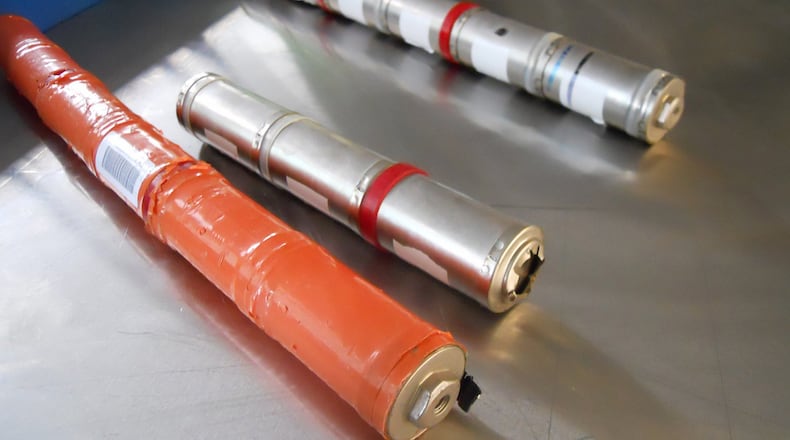Halderman:
The “high-voltage battery” is not just one large battery, but instead is made up of individual cells of about 1 to 2 volts each, all connected together to achieve the system voltage needs of the vehicle.
For example, your Honda battery pack uses nickel metal hydride (NiMH) chemistry. The battery pack is manufactured by Panasonic EV Energy and weighs about 48 pounds. The battery pack, sometimes called the battery module, is constructed in a modular form. The individual NiMH cells are the same size as standard D-cell flashlight batteries. Constructing the module from standard-sized cells helps ensure cost-effectiveness.
These cells, which are grouped together in sealed packages of six cells each, are positioned end-to-end. The arrangement is 6 cells across by 3 cells high by 7 cells deep, with the rearmost row being only 2 cells high, for a total of 120 cells.
The cells each have a voltage of 1.2 volts and are connected in series for a battery module terminal voltage of 144 volts. The rated capacity of the battery module is 6.5 ampere hours (Ah), resulting in a storage capacity of about one kilowatt.
Some companies rebuild the battery packs, which are sold to shops at a lower cost than what you paid. These reconditioned modules are electrically balanced throughout the entire battery pack, which takes a long time to achieve.
While many hybrid electric and electric vehicles can operate for many years without a loss of capacity enough to affect performance, all batteries deteriorate over time.
To help prevent this from happening without warning, ask your service technician to check the status of the battery pack when it is in for service.
About the Author
